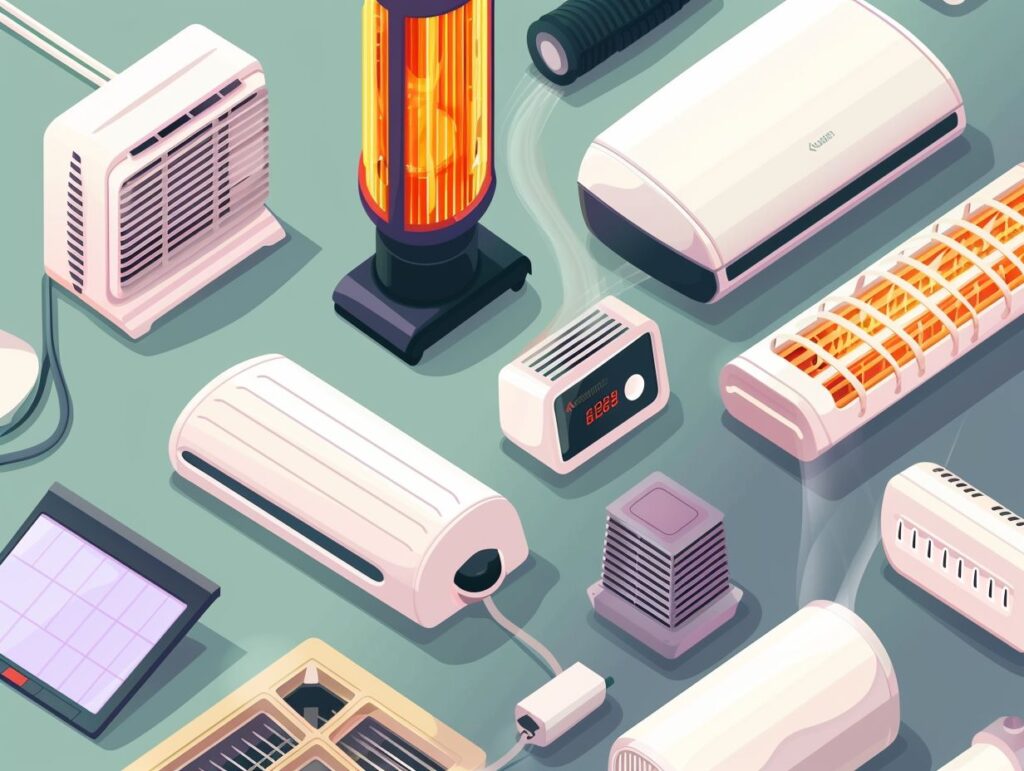When selecting an electric heater to maintain a warm and comfortable environment in your home during the colder seasons, the array of options available can be quite daunting. Various types of electric heaters, such as convection, radiant, ceramic, infrared, oil-filled, wall, baseboard, and portable heaters, offer different features and benefits to consider.
Understanding the different factors to take into account when choosing an electric heater is crucial. Additionally, it is essential to be mindful of important safety precautions while operating these devices. By learning more about electric heaters and their functionality, you can ensure a cozy and comfortable atmosphere in your living space throughout the winter months.
Key Takeaways:
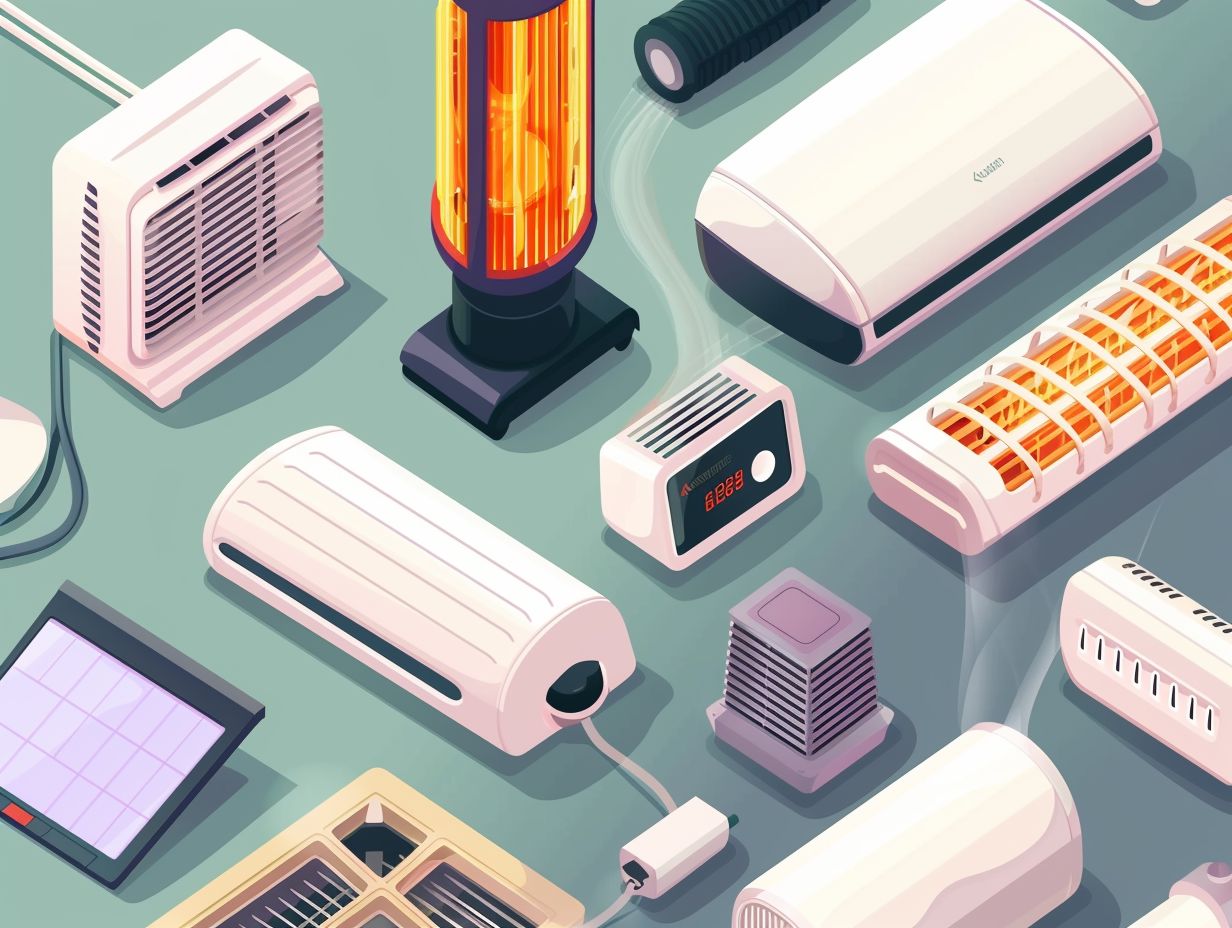
- Convection heaters use natural air currents to distribute heat, making them suitable for larger spaces.
- Infrared heaters emit heat that is absorbed directly by objects, making them a good option for spot heating.
- When choosing an electric heater, consider factors such as room size, heating needs, and safety features.
Types of Electric Heaters
Electric heaters are available in various types, each offering distinct features and benefits for heating different spaces. Understanding the different types of electric heaters can assist you in selecting the most appropriate option for your requirements.
Convection Heaters
Convector heaters operate by heating the air around you, generating convection currents that circulate warm air throughout the room. These heaters are effective at heating large spaces and delivering consistent warmth.
This operational principle is rooted in the natural behaviour of warm air rising and cool air descending, thereby establishing a continuous flow of heated air. By leveraging this process, convector heaters ensure that every corner of the room receives warmth, unlike certain other heating methods that may lead to uneven temperatures.
The uniform dispersal of heat contributes to maintaining a comfortable indoor environment without the necessity for localised heating sources, which is why convector heaters are a favoured option in many households and workplaces.
Radiant Heaters
Radiant heaters, like infrared panels, emit heat that directly warms you and objects in the room without warming the air. These heaters are perfect for spot heating or providing focused warmth in specific areas.
This targeted heating approach makes radiant heaters efficient in preventing energy wastage commonly seen with traditional convector heaters, which warm the surrounding air. Infrared panels function by emitting invisible infrared radiation that surfaces in the room absorb, including furniture, walls, and people, creating a consistent and comfortable warmth.
Radiant heating systems boast quick response times, allowing for rapid heating when necessary, and they don’t depend on air movement to distribute heat, decreasing the circulation of dust and allergens.
Ceramic Heaters
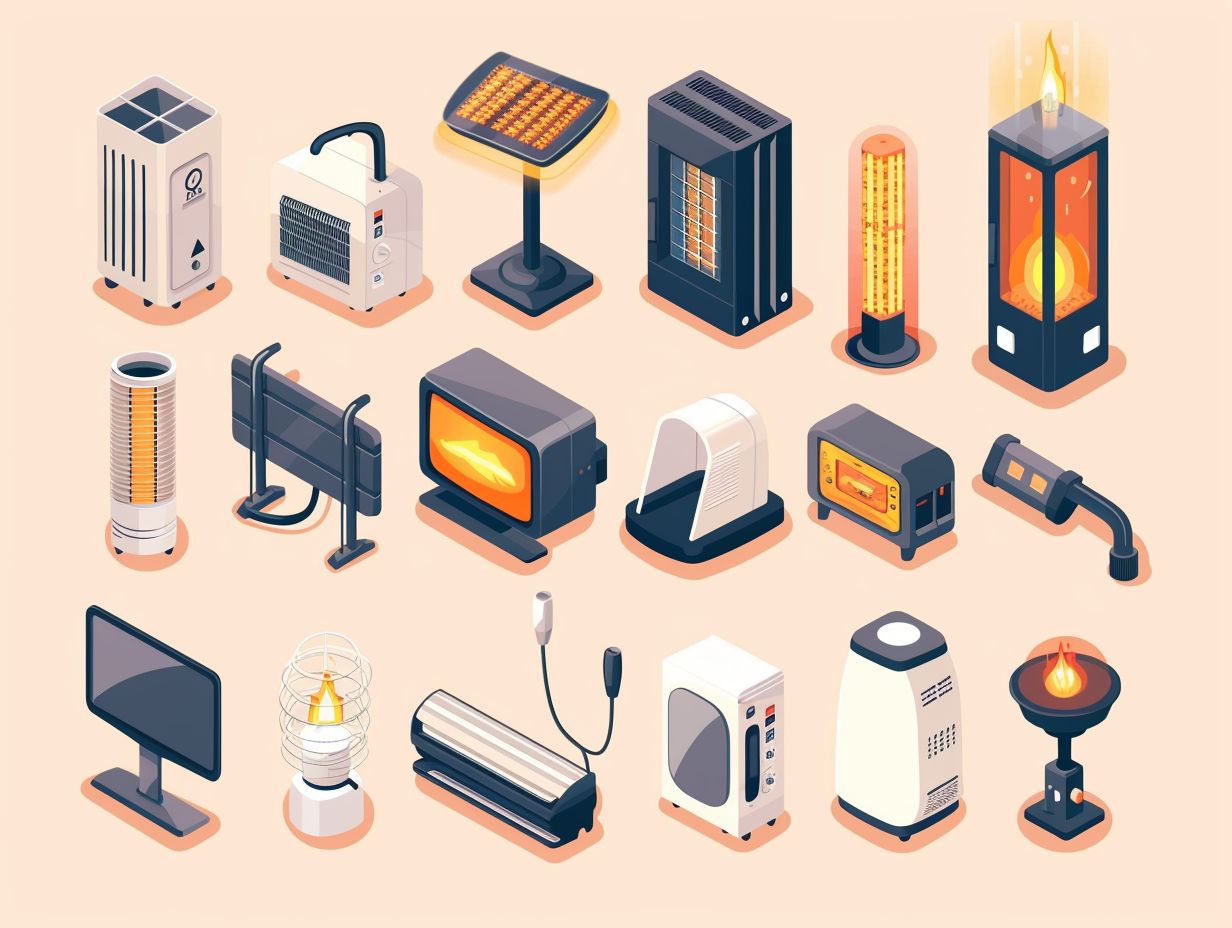
Ceramic heaters utilise ceramic elements to generate heat, which is then dispersed into the room. These heaters are recognised for their rapid heating capabilities and energy efficiency.
The ceramic elements in these heaters boast high heat conductivity, allowing them to achieve elevated temperatures swiftly. This quick heating process is advantageous for individuals desiring immediate warmth in their living area.
Ceramic heaters are crafted to evenly distribute heat, establishing a pleasant and uniform temperature across the room. Through the utilisation of advanced ceramic heating technology, these heaters can effectively convert electricity into heat, leading to decreased energy consumption and reduced electricity expenses for users.
Infrared Heaters
Infrared heaters, such as infrared panels, emit infrared radiation that directly heats objects and individuals, resulting in immediate warmth. These heaters are known for their energy efficiency and ability to provide targeted heating.
The process of infrared heating is intriguing. As infrared panels release infrared radiation, it penetrates the surrounding air without actually raising its temperature.
Instead, it heats up objects and individuals in the vicinity directly, ensuring a rapid sense of comfort. This targeted heating approach minimizes energy waste compared to traditional heaters that primarily warm the air.
Plus their efficiency, infrared heaters lead to decreased energy expenses due to their focused heating method, making them a cost-effective and environmentally friendly heating solution.
Oil-Filled Heaters
Oil-filled heaters utilise thermal oil as a heat reservoir in order to produce warmth. These heaters are recognised for their capacity to retain heat even once they are deactivated, making them a popular option for sustained warmth.
The functionality of oil-filled heaters entails the heating of thermal oil by an electric element housed within the device. As the oil absorbs the heat, it maintains thermal energy, effectively emitting warmth into the nearby area. This approach facilitates gradual and consistent heating, thereby decreasing energy consumption in comparison to traditional heaters that cycle rapidly on and off.
The enduring heating capability of oil-filled heaters guarantees a pleasant and stable temperature within a room, establishing a comfortable ambiance without abrupt temperature fluctuations.
Wall Heaters
Wall heaters are mounted on walls, providing efficient heating solutions for rooms with limited floor space. You will find that these heaters offer discreet heating and are easily controllable for personalised comfort. Their space-saving design makes them ideal for small spaces, as they do not occupy valuable floor space like traditional heaters.
The ability of wall heaters to target specific areas allows for effective heating of rooms without wasting energy on unnecessary spaces, contributing to cost savings on heating bills. Additionally, the sleek and modern appearance of wall heaters adds a touch of elegance to any room, seamlessly blending into the existing decor.
Baseboard Heaters
Baseboard heaters are typically installed along the skirting boards of a room and serve the purpose of providing consistent heat through convection. They are well-suited for maintaining a steady level of warmth in various living spaces.
The convection-based heating mechanism employed by baseboard heaters functions by drawing in cool air from the floor level, heating it within the unit, and subsequently releasing warm air back into the room.
This cyclic process facilitates a gentle circulation of heat that contributes to sustaining a comfortable temperature within the area.
An advantageous aspect of baseboard heaters is their capacity to evenly distribute heat throughout a room, effectively eliminating cold spots and ensuring a uniform level of warmth. Additionally, these heaters operate quietly, enhancing their appeal as a discreet and efficient option for room heating.
Portable Heaters
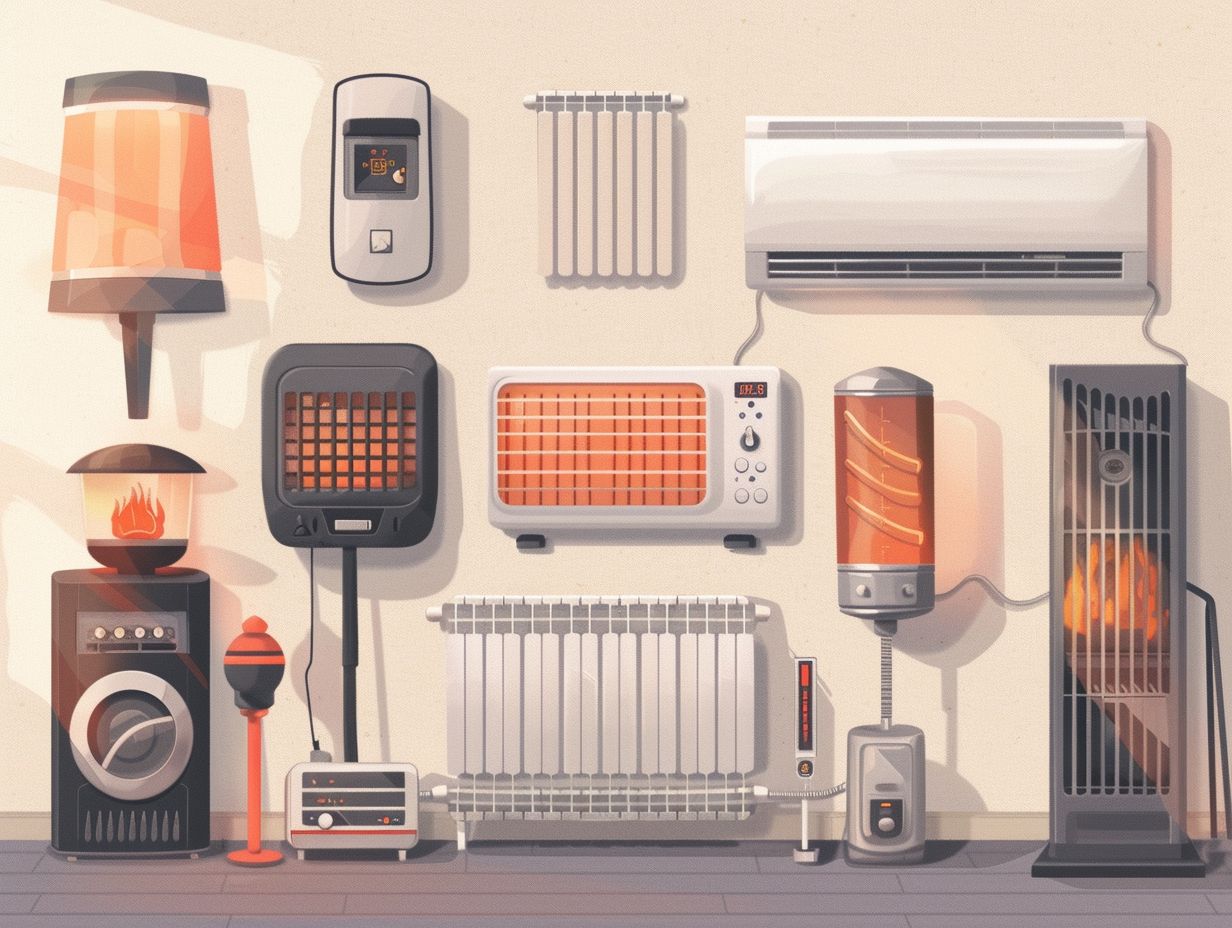
Portable heaters offer flexibility and mobility for heating different areas of your home or workspace. These heaters are easy for you to move and can provide localised warmth where needed. Their compact size allows you to effortlessly transport them from room to room, ensuring that you stay warm and cosy wherever you go.
With adjustable settings and various heat output levels, portable heaters offer customisable comfort to suit your preferences.
Many models come equipped with safety features like tip-over protection and cool-touch exteriors, making them a reliable and practical heating solution for households with children or pets.
The convenience of portable heaters also extends to their energy efficiency, helping you save on heating costs while still keeping specific zones comfortably warm.
Choosing the Right Electric Heater for Your Needs
When selecting the appropriate electric heater, it is important to consider various factors to ensure optimal heating efficiency and comfort. Understanding your specific requirements and the features of different heaters can assist you in making an informed decision.
Factors to Consider
When selecting an electric heater, it is important to consider various factors, including the size of the room, quality of insulation, heating needs, and energy expenses, especially in Economy 7 plans. By understanding these factors, you can choose the most appropriate heating solution.
Specific characteristics of the room are crucial in determining the type of electric heater that is needed. For example, rooms with high ceilings may benefit from infrared heaters for targeted warmth. Conversely, smaller rooms may be better suited for fan heaters for faster heating.
Energy usage patterns also influence the decision-making process; rooms that are frequently used may benefit from programmable thermostats that adjust heating based on occupancy. Under Economy 7 tariffs, off-peak usage is cost-effective, making storage heaters and underfloor heating suitable options for individuals with flexible heating schedules.
Safety Precautions for Using Electric Heaters
To prevent accidents and maintain a secure heating environment, it is essential for you to ensure the safe operation of electric heaters. By following proper safety precautions and guidelines, you can effectively mitigate risks and use electric heaters safely and efficiently.
Tips for Safe Usage
When using electric heaters, you should ensure proper ventilation, refrain from placing objects near the heater, utilise a thermostat to control temperature, and never leave the heater unattended. By adhering to these safety guidelines, accidents can be prevented, and safe heating can be ensured.
Proper ventilation is essential to facilitate effective heat circulation and prevent heat buildup in a specific area. Ensure there is a minimum of three feet of space around the heater to mitigate potential fire risks. Always plug the heater directly into an outlet, and avoid using extension leads to prevent overheating.
It is crucial to supervise the heater while in use, especially in the presence of children or pets, to prevent accidental contact or burns. Remember, prioritizing safety is paramount when using electric heaters.
Frequently Asked Questions
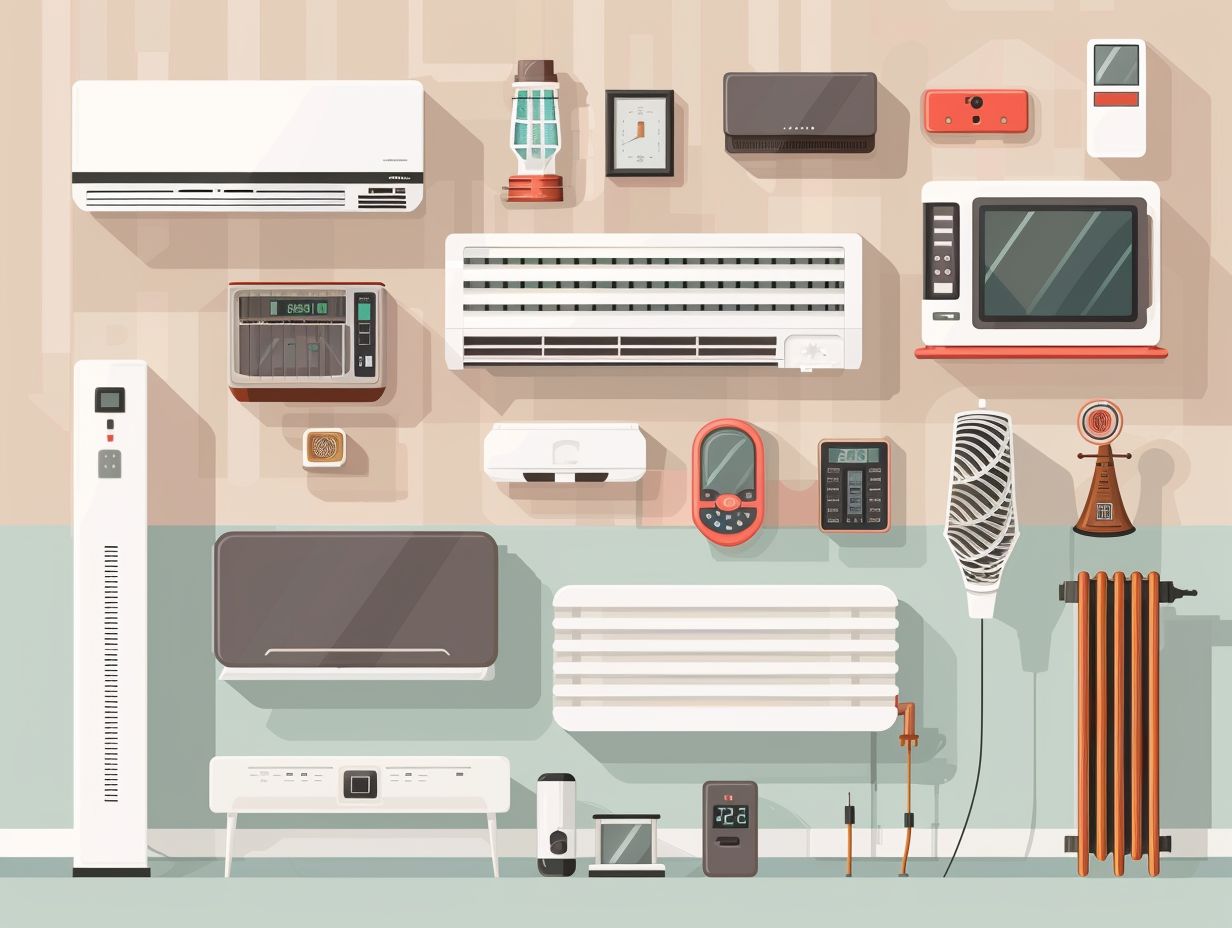
What Are the Different Types of Electric Heaters?
There are several different types of electric heaters, including convection, radiant, fan-forced, infrared, oil-filled, and panel heaters.
What is a Convection Electric Heater?
A convection electric heater works by heating the air in a room and circulating it through the use of a fan or natural convection currents.
How Does a Radiant Electric Heater Work?
A radiant electric heater uses infrared technology to directly heat objects and people in its surrounding area, rather than heating the air.
What is a Fan-Forced Electric Heater?
A fan-forced electric heater uses a fan to distribute heat throughout a room, making it a quick and efficient way to heat a large space.
What is an Infrared Electric Heater?
An infrared electric heater uses infrared rays to heat objects and people directly, making it an energy-efficient and targeted heating option.
What is an Oil-Filled Electric Heater?
An oil-filled electric heater uses electricity to heat oil that is sealed within its heating elements, providing a steady and consistent heat source.

